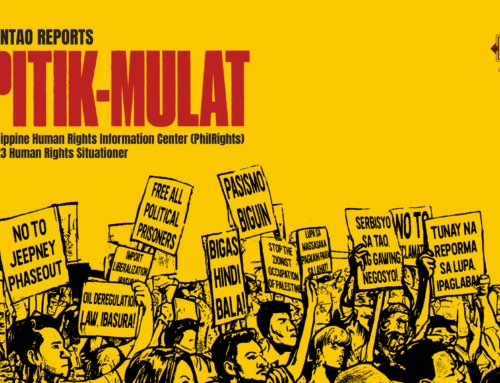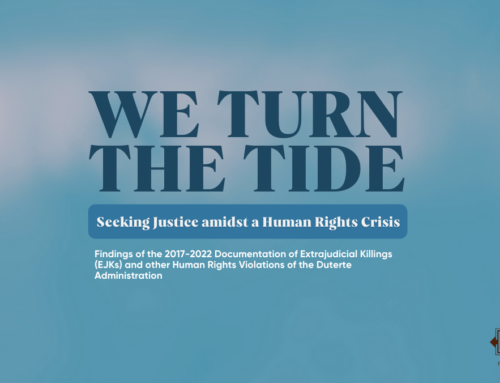(Mexico City) – Mexico’s security forces have participated in widespread enforced disappearances, Human Rights Watch said in a report released today. Virtually none of the victims have been found or those responsible brought to justice, exacerbating the suffering of families of the disappeared, Human Rights Watch found.
The 176-page report, “Mexico’s Disappeared: The Enduring Cost of a Crisis Ignored,”documents nearly 250 “disappearances” during the administration of former President Felipe Calderón, from December 2006 to December 2012. In 149 of those cases, Human Rights Watch found compelling evidence of enforced disappearances, involving the participation of state agents.
“President Peña Nieto has inherited one of worst crises of disappearances in the history of Latin America,” said José Miguel Vivanco, Americas director at Human Rights Watch. “While his administration has announced some important measures to assist victims, it has yet to take the steps necessary to ensure that those responsible for these horrific crimes are brought to justice.”
Human Rights Watch found evidence that members of all branches of the security forces carried out enforced disappearances: the Army, the Navy, and the federal and local police. In some cases, such as a series of more than 20 enforced disappearances by Navy personnel in June and July 2011 in Nuevo León and Tamaulipas, the common modus operandi of the crimes, the scale of the operations, and the inconsistent accounts by the Navy suggest the crimes may have been planned and coordinated.
In over 60 cases, Human Rights Watch found evidence that state agents collaborated directly with organized crime groups to “disappear” people and extort payments from their families. For example, evidence indicates that local police in Pesquería, Nuevo León arbitrarily detained 19 construction workers in May 2011 and handed them over to an organized crime group. The men have not been seen since.
The nearly 250 disappearances documented in the report do not represent all of the cases in Mexico since 2007. On the contrary, official statistics leave little doubt that there are thousands more. A provisional list compiled by the Federal Prosecutor’s Office and the Interior Ministry of more than 25,000 people who were “disappeared” or reported missing since 2006 was leaked to the media in November 2012.
Prosecutors and law enforcement officials consistently fail to search thoroughly and promptly for people reported missing or to investigate those responsible for the disappearances. All too often, these officials blame the victims and tell families it is their responsibility to investigate, Human Rights Watch found. What limited steps prosecutors take are undermined by recurring delays, errors, and omissions.
In none of the 249 cases documented by Human Rights Watch have the people responsible been convicted for carrying out disappearances.
The inept or altogether absent investigations exacerbate the suffering of the families, for whom not knowing what happened to their loved ones is a source of perpetual anguish. Making matters worse, families of the disappeared may lose access to basic social services that are tied to the victim’s employment, forcing them to fight slow, costly, and emotionally draining battles to restore essential benefits such as child care.
Luz María Durán Mota – whose 17-year-old son, Israel Arenas Durán, was disappeared together with three coworkers in Monterrey, Nuevo León after being detained by local police in June 2011 – told Human Rights Watch, “It is a daily torture, not knowing where he is. If they are torturing him. If he has eaten anything.”
Efforts by the Calderón administration to address this problem were belated and grossly inadequate. For most of his presidency, Calderón denied that security forces had committed human rights violations. In his last year he acknowledged that abuses had occurred and pledged to take steps to address them. But he did not fulfill most of his commitments, such as completing a national registry of the disappeared, or submitting a new legislative proposal to Congress to reform the Code of Military Justice that complied with four rulings on the issue by the Inter-American Court of Human Rights.
The report also documents examples of positive steps at the state level to address disappearances. In Nuevo León, government officials and prosecutors, responding to pressure from victims’ families and human rights defenders, have begun to investigate seriously a select group of approximately 50 disappearance cases. While progress so far has been limited, and only a few disappeared people have been found, the collaborative effort shows how winning back the trust of victims’ families and empowering them to hold prosecutors accountable can help overcome some of the greatest obstacles to investigations.
Ultimately, the success of state-level efforts will depend in large measure on whether the federal government takes steps to address the problem. To this end, Human Rights Watch urged the Mexican government to:
- Establish comprehensive, accurate national databases of the disappeared and of unidentified human remains;
- Reform the Military Code of Justice to ensure that all alleged human rights violations, including enforced disappearances, committed by military personnel against civilians are investigated and prosecuted in the civilian justice system;
- Revise the definition of enforced disappearance in federal and state laws to ensure that it is consistent across Mexico and in line with international human rights law; and
- Issue an executive order mandating the immediate presentation of all detainees before the public prosecutor’s office and making clear that under no circumstances may detainees be taken to military installations, police stations, or illegal detention facilities.
An enforced disappearance is a “continuous” crime under international law: it persists, and continues to inflict suffering on the victim’s family, as long as the fate of the missing person is unknown or concealed.
“While disappearances may have started on Calderón’s watch, they did not end with his term,” Vivanco said. “Thousands of the disappeared are still missing. Soldiers and police are hiding the truth about their fate. And the victims’ families continue to suffer from not knowing what happened to their loved ones.”
Examples of disappearances featured in the report in which evidence strongly suggests the involvement of security forces:
- Ten men from Guanajuato were illegally detained in December 2011 by local police in the municipality of Joaquín Amaro, Zacatecas as they returned from a hunting trip. According to two members of the group who escaped, police officers blindfolded, beat, and interrogated the men about whether they had ties to organized crime. Security camera footage shows local police later handed eight of the detainees to armed men at a gas station in Fresnillo, Zacatecas. The eight men were never seen again.
- José Fortino Martínez Martínezwas arbitrarily detained at his home in Nuevo Laredo, Tamaulipas in June 2011 by men wearing Navy uniforms, as members of his family looked on. Relatives of Martínez and other men abducted that night took photographs and video footage of the vehicles that participated in the detentions, which bear Navy insignia. In July, Martínez’s wife met with federal prosecutors and representatives of the Ministry of the Interior to request investigations into her husband’s disappearance. Three days later, her home was sprayed with bullets.
- Roberto Iván Hernández Garcíaand Yudith Yesenia Rueda García, both age 17, were abducted from the home of Rueda’s grandmother in Monterrey, Nuevo León, on March 11, 2011, by men wearing federal police uniforms. Several family members witnessed their illegal detention. Approximately a week later, a man came to Hernández’s home and warned a relative that if the family wanted to avoid more children being taken, they should not report the case to authorities. Hernández and Rueda have not been seen since.
- Oscar Germán Herrera Rocha, Ezequiel Castro Torrecillas, Sergio Arredondo Sicairos, and Octavio del Billar Piña all called their spouses separately to tell them they had been stopped by local police at a gas station in Francisco I. Madero, Coahuila in May 2009. They were never seen again. Three people disappeared in identical circumstances in the same location the previous month.
Powered By WizardRSS.com | Full Text RSS Feed | Amazon Plugin WordPress | Android Forums | WordPress Tutorials







